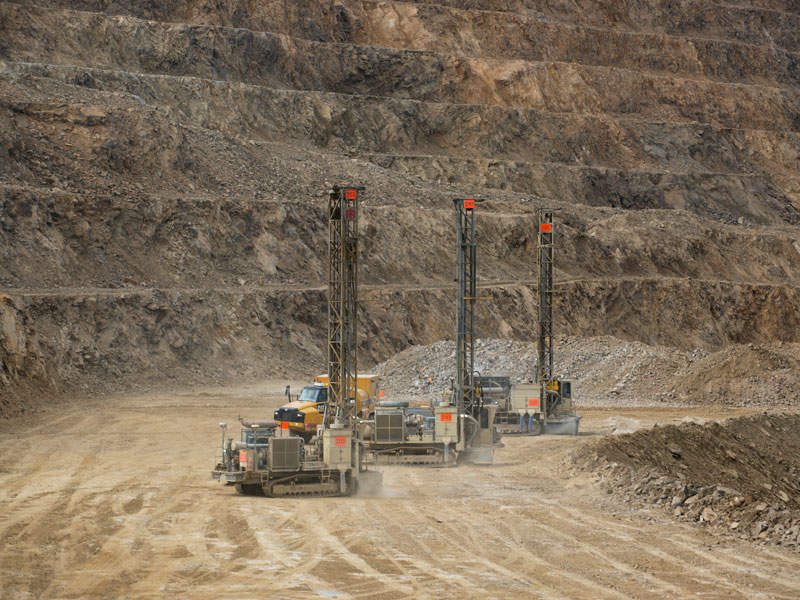The Fort Knox gold mine, located in Fairbanks North Star Borough of Alaska, US, is being expanded to include newly acquired mineral rights. The mine currently employs conventional open-pit methods and operates a 45,000 tonnes per day (tpd) capacity mill and heap leach facility.
Kinross Gold is the developer of the project, which is the company’s biggest producing mine and one of the few cold weather heap leach facilities in the world. Feasibility study of the Fort Knox expansion project, referred to as Gilmore, was completed in June 2018.
Kinross proposes to start early construction works at the Gilmore expansion project in the third quarter of 2018, and commence production in 2020. The project, including Gilmore ore, is expected to have a life of mine production of 1.5 million ounces (Moz) of gold.
Fort Knox mine location, geology and mineralisation
Extending over more than 31,000ha, the Fort Knox property comprises an open-pit mine and processing facilities, and the Gil and Gilmore properties.
The project is located within the Fairbanks mining district, a part of the Yukon-Tanana terrane, which hosts paleoproterozoic, poly-metamorphosed schists of primarily sedimentary origin. The Tintina fault system is located to the north of the terrane, while the Denali fault system is present on the south.
Most of the gold mineralisation at Fort Knox is contained within the Fairbanks Schist, a unit of the Yukon-Tanana terrane. Grey to brown, fine-grained micaceous-quartz schist and micaceous quartzite are the most commonly found rocks at Fort Knox.
Mineralisation is restrained entirely within the Late Cretaceous Fort Knox granite pluton, with most of the pluton contacts sinking steeply to the north and south, and moderately to the east and west.
“The Fort Knox gold mine is estimated to contain proven and probable ore reserves of 282.2 million tonne (Mt) of ore.”
Fort Knox Gilmore expansion project details
Kinross Gold acquired mineral rights for the Gilmore property in December 2017. The property is spread over an area of 287ha and is located to the west of the Fort Knox mine. The acquisition resulted in the increase of 2.1Moz in estimated measured and indicated resources and 300,000oz in estimated inferred resources at Fort Knox.
The expansion project is expected to extend the mine life of Fort Knox to 2030, which includes extension of mining activities by six years to 2027, and leaching to 2030. The mine was initially proposed to operate until 2020.
A multi-phase layback of the existing Fort Knox pit will be undertaken as part of the expansion, in addition to building a new heap leach pad. An estimated 5% of ore from the Gilmore property is anticipated to be stacked on the existing pad, while the remaining ore is expected to be stacked on the new heap leach pad.
Fort Knox gold mine reserves
The Fort Knox gold mine is estimated to contain proven and probable ore reserves of 282.2 million tonne (Mt) of ore containing 3.37Moz of gold, grading 0.37 Au g/t (including Gilmore ore).
Mining and processing at Fort Knox Gilmore expansion
The Fort Knox mine employs a conventional hard-rock open-pit method of mining, which encompasses drilling and blasting followed by loading and hauling.
The mine is currently moving between 63 and 73 Mt of material a year, including open-pit and re-handling activities. The mining rate during the Gilmore expansion period is expected to range from 63Mtpa to 75Mtpa.
Ore processing for the Gilmore expansion project will be similar to that the existing Fort Knox operation. The current operation includes two ore processing lines – a mill operation comprising crushing, grinding, gravity concentration, agitated cyanide leaching, and a carbon-in-pulp circuit, and a cyanide heap leaching operation for recovering gold in two parallel carbon-in-column (CIC) circuits.
The Gilmore ore will be leached at the Barnes Creek Heap Leach (BCHL) pad, which will work simultaneously with the existing Walter Creek Heap Leach (WCHL) leach pad.
Barren solution will be pumped to the top of WCHL and the resulting lean pregnant solution will then be forwarded to BCHL. It will be further processed by using the two existing parallel CIC circuits.
Gold will be extracted to activated carbon and recovered from the strip solution using electro-winning. It will then be refined to produce doré bars at the mill refinery.
Infrastructure at Fort Knox mine
Power for the Fort Knox mine is currently being sourced from the Golden Valley Electric Association substation at Gold Hill.
The Gilmore extension project will use the existing sources of fresh, fire, potable and process water. Additional water required, if any, will be sourced from the tailings storage facility and will be added as make-up water in the CIC plant.
The Fort Knox mine can be reached from Fairbanks through a 34km paved highway and 8km unpaved road.





